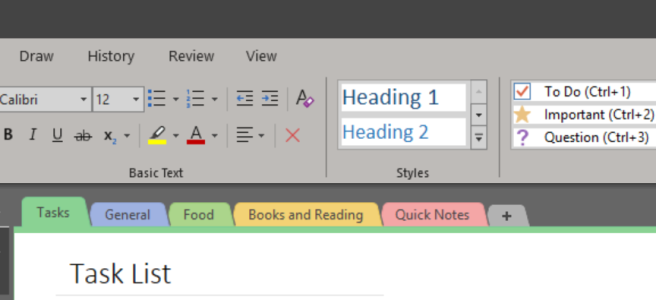It's not overstating things to say that I use Microsoft OneNote in every part of my life. I use it to create and track projects at work; categorize, list and annotate the technologies I work with; share information with my family (from groceries to the punch-down list my wife uses when she flips houses, to … Continue reading How I Work – Using OneNote For My Daily Task List
Author: BuckWoody
SQL Blogs from Microsoft – The List
We have migrated several active and inactive MSDN blogs to these new combined blogs. If you’re wondering where the content went, here’s a table that lists the old blog and the new URL for the blog. Note that each source blog has a label at the end there in the new target blog which allows … Continue reading SQL Blogs from Microsoft – The List
SQL Server Big Data Clusters Workshop at SQL Bits
On Thursday, 28 February 2019, I'll be teaching a brand-new course from Microsoft called "Microsoft SQL Server Big Data Clusters Architecture", which I'll be delivering as a one-day workshop at SQL Bits in Manchester in the UK. I wanted to explain how the course will work, since we'll be covering a lot of information in … Continue reading SQL Server Big Data Clusters Workshop at SQL Bits
A Speaker’s Workshop in 35 Minutes
Well, not the *whole* workshop. That's a full-day long, with individualized attention and exercises. I condensed that into 35 minutes - and decided to make it free to everyone. If you check my LinkedIn profile, you'll see my "Job Title" section below my name reads "Smarter People are Better People". If you know more about, … Continue reading A Speaker’s Workshop in 35 Minutes
Buck Woody is Returning to SQL Server
I started at Microsoft in 2006 - in the SQL Server team. I've been a DBA/Developer/BI dev since 1981, on systems from mainframes to HP VAX Clusters, Solaris systems, and more. I worked as a Program Manager (someone who owns a feature within a product at MSFT) for the management tools - SQL Server Management … Continue reading Buck Woody is Returning to SQL Server
Syllabuck: Ignite 2018 Conference
(A "Syllabuck" is like a Syllabus, but more like that second definition, and certainly more random) I recently attended, presented, worked and did interviews at the Microsoft Ignite 2018 Conference in Orlando. If you have never been, you should go sometime. 30,000 people, 2.1 million square feet of space, and ten+ miles of walking per … Continue reading Syllabuck: Ignite 2018 Conference
Ethics and the Importance of Being an Information Skeptic
Whenever I teach or present a session on Artificial Intelligence, I start with Ethics. We've created a site where you can quickly walk through a few of the major principles we follow at Microsoft for AI here: http://aka.ms/ai-ethics. I walk through these principles before I show how to design a Machine Learning solution, and then … Continue reading Ethics and the Importance of Being an Information Skeptic
The Keys to Effective Data Science Projects – Part 10: Project Close-Out with the TDSP
Data Science projects have a lot in common with other IT projects in general, and with Business Intelligence in particular. There are differences, however, and I’ve covered those for you here in this series on The Keys to Effective Data Science Projects. One of those areas where general projects and Data Science projects are similar … Continue reading The Keys to Effective Data Science Projects – Part 10: Project Close-Out with the TDSP
The Keys to Effective Data Science Projects – Part 9: Testing and Validation
We’re continuing our discussion of the series of the Keys to Effective Data Science Projects, this time focusing on Testing and Validating the Model. We're in the general phase in the Team Data Science Process called "Customer Acceptance". "Testing" in the general sense is the same in Data Science projects and any other typical software project - … Continue reading The Keys to Effective Data Science Projects – Part 9: Testing and Validation
The Keys to Effective Data Science Projects – Part 8: Operationalize
We’re in part eight on our journey through the series of the Keys to Effective Data Science Projects -"Operationalization" - a term only a marketer could love. It really just means "people using your solution". And it's this part of the process that is quite possibly the most complicated, and usually the one done with the … Continue reading The Keys to Effective Data Science Projects – Part 8: Operationalize







